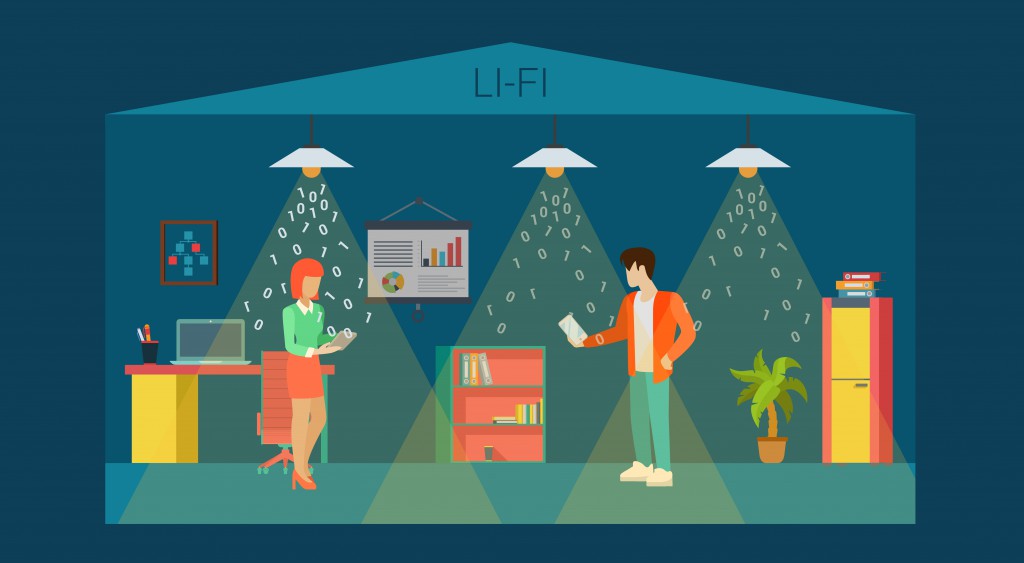Share This
Related Posts
Tags
Li-Fi
By Anca Gagiuc on Dec 23, 2016 in Technology
Wi-Fi revolutionized the way we connect to the internet, but it’s not without flaws. Researchers have been busy looking for new kinds of technologies that could offer more reliable alternatives. One is called Li-Fi (Light Fidelity).
Back in 2011, a group of scientists led by Professor Harald Haas from Edinburgh University in Scotland introduced the idea of “Wireless data from every light” during a TED Talk. The general term is visible light communication (VLC) and is similar to the Morse code; it dates back to the 1880s and includes any use of the visible light portion of the electromagnetic spectrum to transmit information. Li-Fi is a type of visible light communication system that runs completely on wireless communications by means of travelling at very fast speeds. Confusing or not, this emerging technology is projected to expand its market worth to $80 billion by 2021. So let me explain.
Wi-Fi and Li-Fi are pretty similar—they both provide the same means of transmitting data electromagnetically; yet, Wi-Fi utilizes the usage of radio waves, while Li-Fi runs solely off of the visibl e light.
e light.
Even though invisible to the naked eye, waves are transmitted from our devices, carrying bits of data that allow us to browse the internet. There is a constant communication with towers called cellular radio masts. According to the founder of Li-Fi, Harald Haas, there are approximately 1.4 million cellular radio masts worldwide. Li-Fi replaces this bulky infrastructure with a solution relying on LED lights that send data over visible light via pulses undetectable by the human eye. Moreover, on the electromagnetic spectrum the spectrum of visible light is 10,000 times as big as that of radio-waves, said Haas.
Unlike Wi-Fi signals, which can penetrate walls, Li-Fi is based on light and can’t, so theoretically, its range is more limited. However, because of this limit, Li-Fi is also potentially more secure from external sources—due to light’s inability to penetrate walls, it’s very difficult to reach sensitive data transmitted through Li-Fi. The trade-off here would be between convenience and security, but according to scientists, smart architecture would allow light to follow a user, but scientists are also working on a way to make Li-Fi functional in the dark, too.
Li-Fi also opens more possibilities for smart home appliance—in the future, LED lightbulbs could serve two functions: lighting up a room and helping to create a network inside the house for the devices to talk to each other (hello, IoT!).
Besides the LED lightbulbs needed to transmit data, a receiver able to interpret that data is also required. At the beginning of this year, reports came out stating that iPhone’s operating system openly references Li-Fi capability in its programming code. Furthermore, the technology has been used in a grocery store in Northern France to track the location of customers with their consent. Still, there is more to Li-Fi than the geo-location tool.
Professor Haas has proposed retrofitting the existing internet framework to support the new technology and to that end, he founded pureLiFi in 2012, which provides internet at speeds of first generation Wi-Fi. One year later, the company launched its first product Li-1st. Now, at its third generation, pureLiFi products have increased on device speed with 40mbps uplink and downlink. What’s more important though, is not the speed, but the accessibility—several Li-Fi lightbulbs can be placed in a room that only supports one Wi-Fi router, providing enough bandwidth for all.
The partnership with LED light maker Lucibel brought in September the first industrialized Li-Fi product, the Lifi luminaire. Additionally, real estate development company Nexity was the first end user of the technology and Microsoft will be using it at its innovation center in Issy-les-Moulineaux.
Li-Fi seems to have a bright future ahead. Dubai will be the first city in the world to switch to the Li-Fi service and it will be trasmitted through the city’s streetlights. The first phase will be rolled out by the end of this year.
